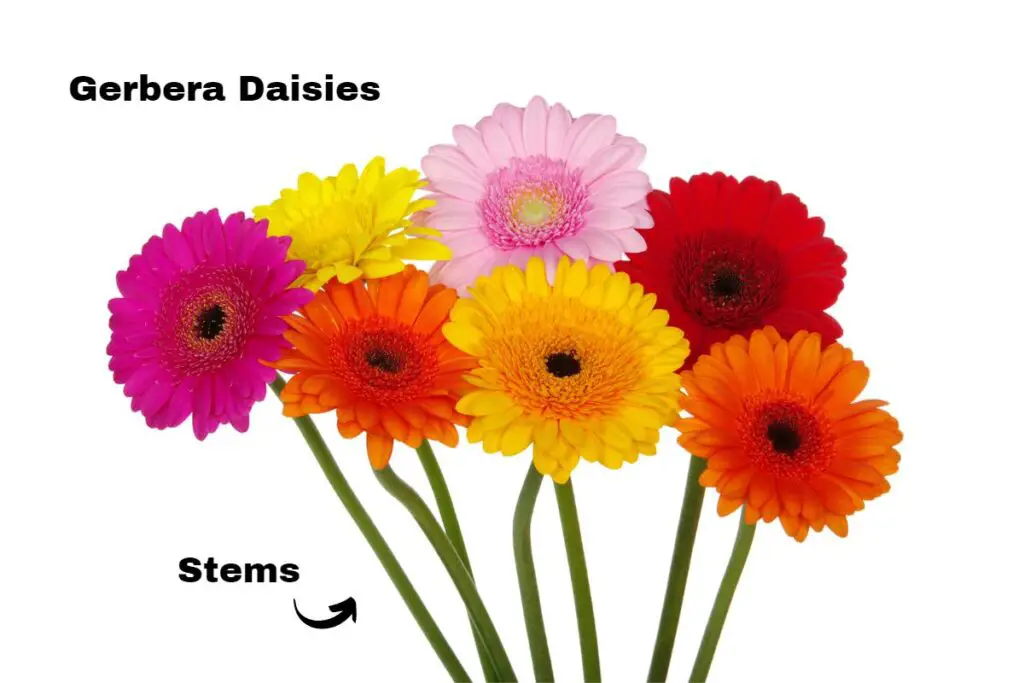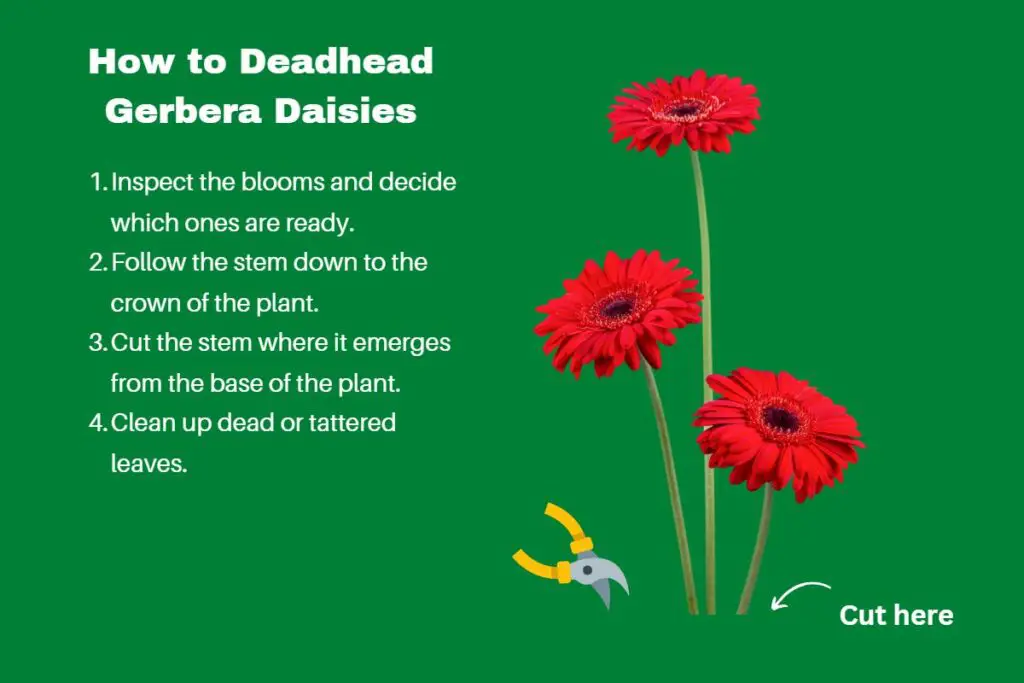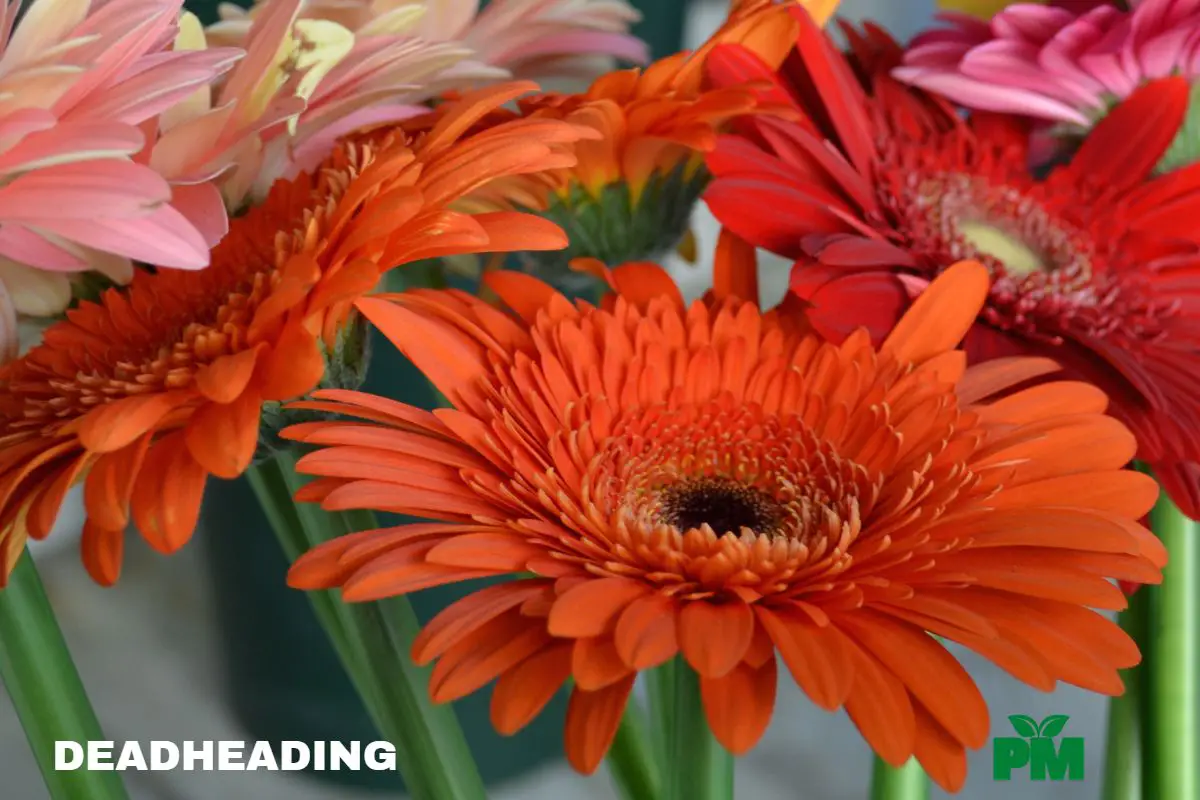Gerbera jamesonii, commonly referred to as the gerbera daisy, is an herbaceous perennial that belongs to the aster family.
These plants are grown for their stunning floral displays and we want to keep them blooming for as long as possible. One way to achieve this is a pruning technique known as deadheading.
Table of Contents
Gerbera Daisy Deadheading
Deadheading your gerbera daisies will help keep them blooming all season long. They will start to bloom in late spring and after a few weeks, some of the flowers will begin to wilt and fade. When this happens, simply follow the stem down to the crown of the plant and cut off the declining flower.
Perennials fill our gardens with long-lasting beauty that appeals to pollinators and a broad section of desirable wildlife. Their stunning flowers and foliage cascade through the landscape creating interest, mystery, and beauty that is hard to match.
For a perennial, gerbera daisies are fairly short-lived. What they lack in longevity they make up for with their remarkable flowers. The blooms of the gerbera daisy are big, beautiful, and very rich in color. They hover on long, sturdy stems above basal rosette leaves that grow low to the ground. When in bloom these plants hardly look real.
Deadheading gerbera daisies can help keep them healthy and vibrant. Along with removing spent flowers, it is a good idea to trim leaves that are tattered or faded at the same time.

Do You Have To Deadhead Gerbera Daisies?
It is certainly not essential to deadhead your gerbera daisies. However, deadheading can maximize growth and potential flower output and is usually a good idea.
When grown outdoors in the garden, gerbera daisies can produce as many as 25 flowers over the course of a season. Most potted plants will produce around 15 flowers when properly deadheaded. The more room the roots have to grow, the more flowers you are likely to get.
It is not uncommon to see five or more blooms at one time on any given plant. Deadhead and prune off old tattered leaves to get the maximum number of flowers out of the gerbera daisy.
With the right care, these flowers will thrive whether outside in the ground, growing in containers inside your home, or out on the patio.
See our article for Growing Gerbera Daisies in Pots
When Should I Deadhead My Gerbera Daisies?
Gerbera daisies can be purchased as nursery starts or grown from seed. When growing from seed it can take anywhere from eighteen to twenty-four weeks to go from sowing to blooming. Purchasing the starts gives you a significant head start on the growing season.
Once your gerbera daisies are in full bloom you will have a couple of weeks to enjoy the flowers before they start to fade. When deadheading, your main goal will be to cut the flowers back before they go to seed.
Because their main objective is to grow seeds for which they can propagate, cutting the flowers off before the petals start to fall and seeds form keeps them producing new flowers so that they may accomplish this goal. But why wait until the flowers fade?
Gerbera daisies are one of the most popular cut flowers in the world for a reason. You will probably want to cut these flowers while they are still bright and beautiful so that you can continue the enjoyment, these flowers bring.
Keep an eye on your gerbera daisies throughout the growing season. About once a week, you’ll want to cut certain flowers back before the petals start to deteriorate while the center is still tight.
It may take a week or two before you get a second flush of flowers. Remaining diligent about deadheading will keep them reblooming throughout summer and even well into the fall.
Check out our article How To Keep Gerberas Blooming
What Do I Need To Deadhead Gerbera Daisies?
Deadheading gerbera daisies is not difficult and very few tools and equipment are needed. A small pair of pruning shears or even some nice sharp kitchen scissors is all that is required.
You may want to bring along a container to transport the flowers to their new location. Likewise, you may want to prepare a vase in which to keep these awesome blooms for display.

How To Deadhead Gerbera Daisies
Deadheading perennials can sometimes be a little tricky. When you have found a spent bloom that you are wanting to remove, you want to follow the stem to the next lateral movement making sure not to cut off new buds or other parts of the plant that you want to keep intact.
Fortunately, this is not a problem with the gerbera daisy. This is because the flower of the gerbera daisy grows on a single stem, called a scape, that travels all the way down to the crown of the plant.
When deadheading the gerbera daisy you will want to:
- Inspect the blooms and decide which ones are ready to be “picked”.
- Follow the stem down to the crown of the plant.
- Using a clean, sharp pair of shears, cut the stem where it emerges from the base of the plant.
- This is also a good time to clean up dead or tattered leaves to keep the plant looking its best.
Creative Ideas for Using Your Gerbera Daisies After Deadheading
I’ve cut my gerbera daisies and have all these gorgeous flowers, now what? Whether it’s a few freshly cut flowers in a makeshift vase or an ornate flower arrangement, gerbera daisies look amazing, not only in floral arrangements but in any number of arts and crafts projects.
Fresh flowers help lift spirits, add beauty to the home or office, reduce stress, improve focus and productivity while enhancing creativity, and help us connect to nature. Having flowers around is always a good idea, and I usually add gerbera daisies to my weekly floral arrangements in my home when I can.
Pressed flowers can be used as wall art, on cards, in journals, on bookmarks, on phone cases, and so much more! All the things you can do with your flowers are only limited by your imagination.
Want to learn more about gerbera daisies? Check out Gerbera Daisy Sun or Shade
Check out some other red flowers! With Red Perennials
Related Question
Do I need to deadhead my perennials?
Deadheading perennials is not necessary, but it can encourage more blooms and prolong the blooming period. Perennials will naturally produce flowers and then seed heads, which can divert energy away from new flower production.
How often do I need to deadhead my perennials?
The frequency of deadheading perennials depends on the specific plant and its blooming habits. Some perennials benefit from deadheading as soon as flowers start to fade, while others can be left until the end of the season.
Additional Sources:
Meredith Corporation, Perennial dream gardens (2011)

